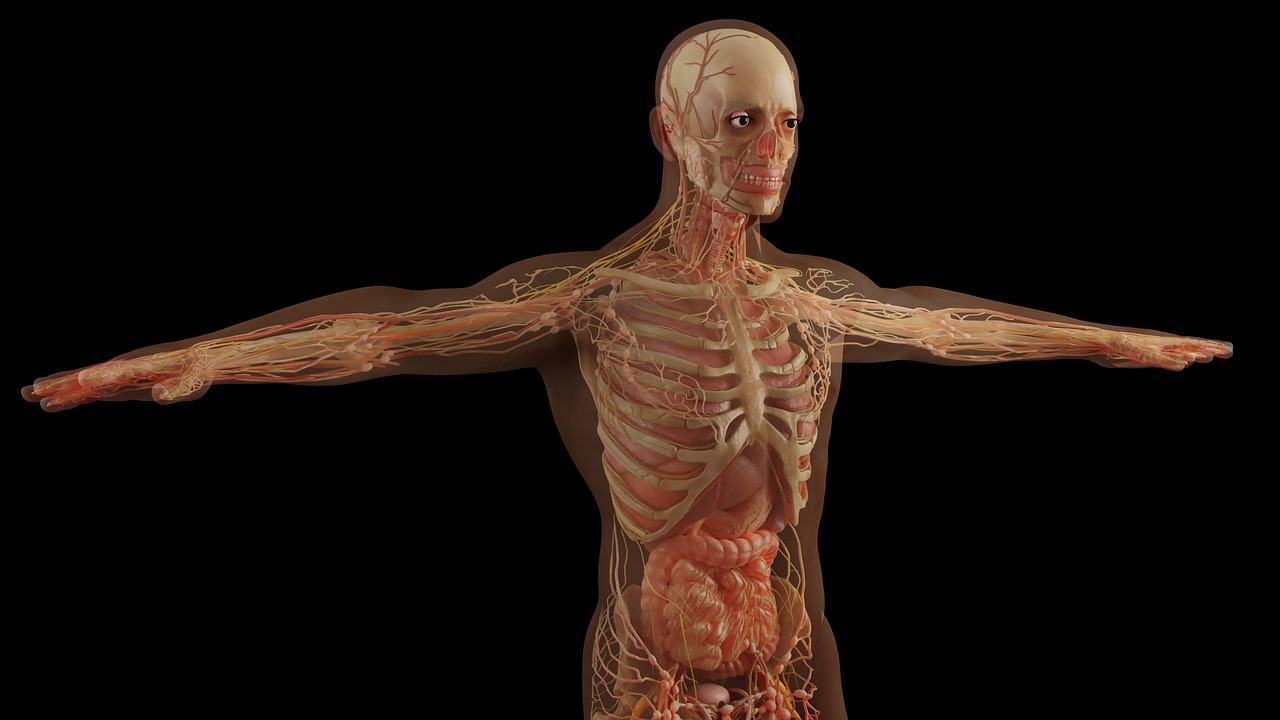A comprehensive scientific guide to the most integral aspects of the muscles in our bodies. Through understanding the intricate ways in which our muscles work, we can work out based on which effects we desire–whether that be increased strength, endurance, or a certain appearance. Use this as a beginner’s guide to reaching awareness of your muscles’ functions!
Author: Niklàvs Pallu Caune
What is Muscle?
It is a contractile organ (one that contracts), composed of filaments that slide over each other to contract, creating movement and force.
The energy source for muscles is ATP (adenosine triphosphate), which the body produces by converting lipids (fats) or carbohydrates (slow-acting or fast-acting sugars).
There are three types of muscles : skeletal muscles, cardiac muscles, and smooth muscles.
Cardiac muscles are essential muscles that make the heart beat.
Smooth muscles are muscles that you cannot voluntarily control because they contract either under the influence of hormones or the autonomic nervous system. These muscles do not produce much force and are present in the heart, in the digestive and respiratory systems, the urinary and genital tracts, and the eyes.
Finally, skeletal muscles are what one generally thinks of when talking about muscles. These are muscles attached to bones by tendons, allowing you to move and control them. These are the muscles I will be dissecting in this article.
Muscle Fiber Types
There are two main types of muscle fibers: Type 1 and Type 2.
There are three types of Type 2 fibers: Type 2a, Type 2x, and Type 2b.
Type 2b fibers are not present in humans, so we will not discuss them further.
Type 1 (slow twitch) muscle fibers are endurance fibers, that contract slowly and produce little force, but do not fatigue easily, thus can work for hours. These fibers are activated and used for easy, slow movements that can be repeated for hours, e.g., walking. We can walk for hours because we have Type 1 Fibers in our legs. Their main energy store is fat (Triglycerides). This means that by doing easy endurance exercises for a long time, you will burn fat, which is transformed into ATP, giving energy to your muscles.
Type 2 muscle fibers (fast twitch) fatigue faster (the most enduring ones last up to 30 minutes), and produce a lot of force, as well as being much larger than Type 1 ones. If we compare marathon runners, body builders, and sprinters, we can see a very big difference in muscle size. Marathon runners, who run for hours at a time, produce a force that is rather easy for them to produce, whereas bodybuilders and sprinters do sets that generally last very short time and produce a lot of force. Indeed, the muscles of marathon runners are much smaller than those of sprinters or bodybuilders. And they are used in anaerobic activities that make the heart beat fast and require a lot of oxygen. Their energy sources are glycogen (which comes from carbs or sugar) and creatine (an amino acid derivative found in meat, which athletes tend to supplement for its performance and health benefits).
Type 2a fibers are consistent in all areas. They produce average force, moderately quickly, which lasts less than 30 minutes. They are used, for example, in 5K races.
Type 2x fibers are very strong, fast, and large fibers that can work for up to 5 minutes. These are the fibers used in sprinting and bodybuilding in general.
The ratio between type 1 and 2 fibers in our muscles is genetic and changes very little. Some people are naturally very strong and fast, while others have great endurance. However, the ratios between type 2a and type 2x can be changed through specific training. We can also train certain fibers over others to favor them, also through specific training. For example, to train your Type 2 fibers, you can do sprints or explosive exercises like jump squats or explosive pull-ups. The key is to try to produce as much force as possible in the shortest possible time. Inversely, to train endurance fibers, you can try running or walking for hours (over 30 minutes), focusing on ease.
The takeaway from this, is that if you want to lose weight, it is more effective to do endurance activities, like walking, rather than weight training. For optimal performance in all areas, it is wise to supplement with creatine, and avoid hypoglycemia (low blood glucose/sugar levels).
Different Adaptations of Muscles
Muscular hypertrophy is the increase in the size of muscle fibers. Hypertrophy is also accompanied by strength gains.
To cause muscle hypertrophy, you must do resistance exercises (push-ups, bench presses, pull-ups, etc.); this is where you reach muscular failure (i.e., your muscles no longer have the strength to contract under the load of the exercise, e.g., after 30 push-ups, you can no longer do them; this is muscle failure), and where there is a strong stretching tension (at a point in the exercise, your muscles are in a position where they are stretched, but still tense, to avoid tearing).
Congestion is also a form of hypertrophy. During certain exercises, you will feel your muscles grow. This happens because blood is pumped into your muscles. It is temporary, but because it widens your muscles, they will have an easier time actually growing in the future, after the “pump”.
To gain muscle, you need a sufficient protein intake; approximately 2 to 3 g of protein per kg of body weight. Another essential factor is lifestyle: sleep, diet, stress, etc.. The better your lifestyle is, the better your hypertrophy will be.
Muscle atrophy is the opposite of hypertrophy. It is when your muscles shrink. It occurs when your body sees that you do not need the muscles: when you are no longer using them for the purposes you trained them for, or when the body prioritizes its resources for other parts of the body in times of crisis, such as lack of sleep, lack of protein, or lack of nutrition. However, this does not happen if the muscle atrophy is only very slight.
After muscle atrophy, muscle memory remains: a phenomenon that creates hypertrophy, which allows you to regain your previous mass, faster and easier than the first time.
Strength increase is the increase in muscle strength. It increases through hypertrophy, but can also increase on its own, with training.
This occurs because the nervous system becomes more adapted to certain movements. Thus, it can create more force, and above all, better utilize muscle fibers–thanks to an adaptation of the nervous system and better recruitment of motor units in the muscle.
Increased mitochondrial content. Mitochondria are the body’s powerhouses, producing ATP (muscle fuel) through cellular respiration.
Increasing mitochondrial content in muscles therefore increases cellular respiration, and therefore your muscles’ ability to generate energy. This allows them to recover faster after exercise, resist fatigue, limit lactic acid production, and thus limit the burns felt during exercise, and increase their overall endurance.
To activate this adaptation, the most effective option is high-intensity interval training (HIIT). These excercises consist of varying periods of intense effort, with rest periods in-between, thereby gradually increasing your heart rate.
You can also activate it by doing endurance training like running, cycling or swimming (the greater the intensity, the stronger the adaptation).
Muscle angiogenesis is the increase in muscle vascularization, through the process of growing new blood vessels from existing ones. This allows the muscles to be supplied with more blood, thus more oxygen and nutrients, and to drain waste more easily. This results in a better oxygen supply to the mitochondria, so they function better, thus providing all the benefits of previous adaptation. In addition, the muscles fatigue less, and accumulate less metabolic waste and lactic acid (once again, less muscle burning).
All physical exercises activate this process, but the best in this area is endurance training, followed by HIIT.
Increased energy storage refers to the increase in the muscles’ capacity to store what they need for exercise. It allows muscles to perform at higher levels, fatigue at a slower rate, and recover faster. Energy storage capacity also increases with hypertrophy, as there is more room for storage.
By training regularly, especially endurance training, we train our muscles’ glycogen and triglyceride storage capacity.
By resistance training, we train our muscles’ capacity to store creatine.
Connective tissue thickening, is the thickening of:
- Tendons — connect muscles to bones
- Ligaments — connect bones together at joints
- Fascia — the membrane that surrounds our muscles and connects everything.
This thickening makes these tissues stronger, more stable, and helps them transmit force better. It is caused by resistance exercises, or high-impact activities (running, plyometrics).
Having stronger connective tissue increases performance and limits injuries. It also allows you to exercise more, with less stress on your joints.
Editor: Hedvig Paulander
Image: Monoar Rahman Rony from Pixabay


